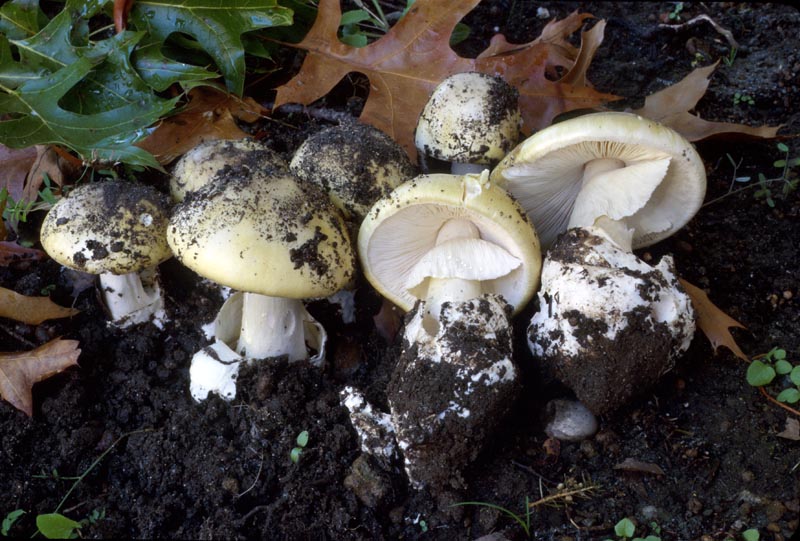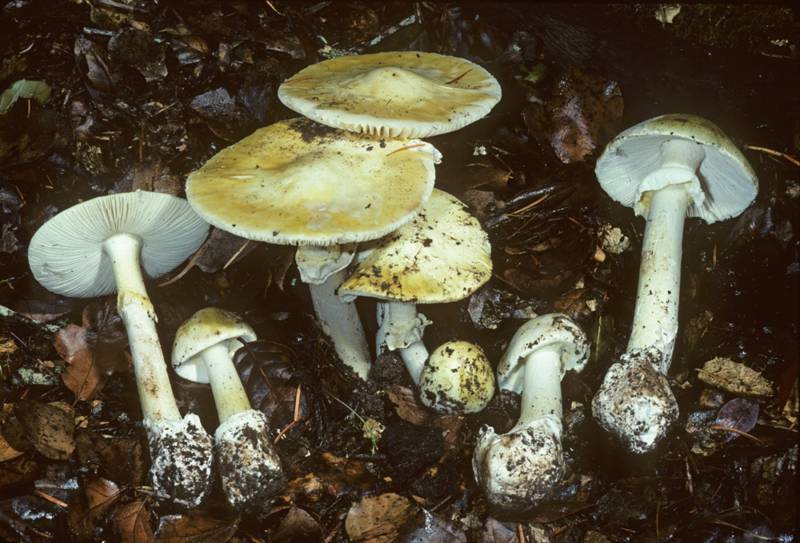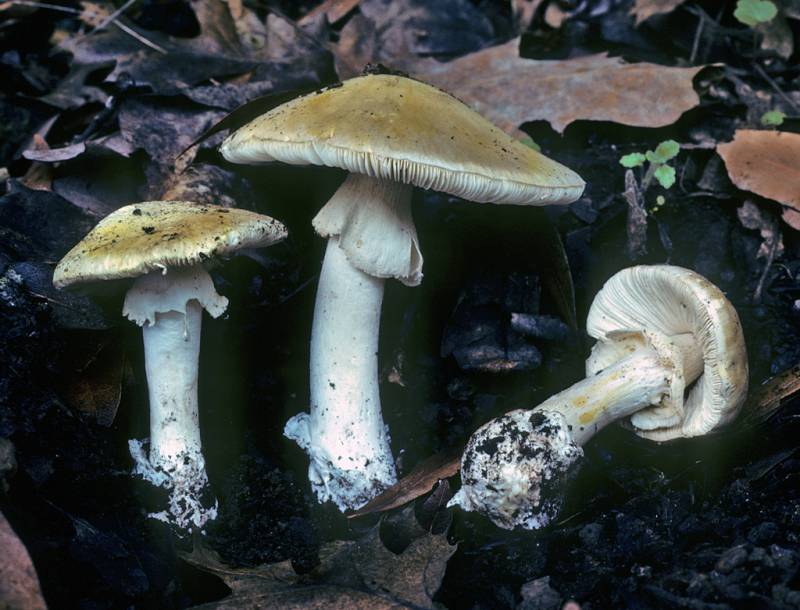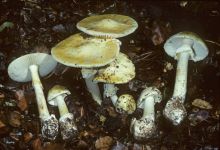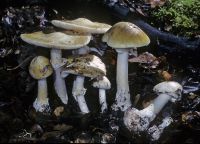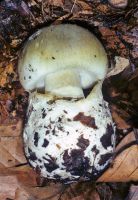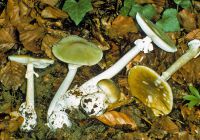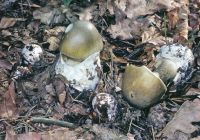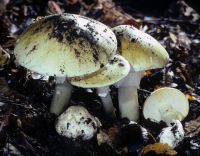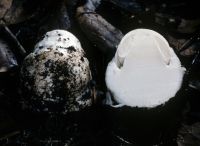Habitat: woodland
Substrate: broadleaf trees
Conservation Status: Not of concern
Edibility: Poisonous.
Poisonous.
Spores are white and amyloid. Growth of up to 6 inches. Cap diameter of up to 5 inches. A. phalloides usually has an olive to greenish yellow or yellowish brown to bronze cap, often with darker streaks, but not striations, on the margin. Occasionally it also occurs in a white form. It has been introduced into North America and has become naturalized in the forests of the San Francisco Bay region. It typically occurs in fall. In urban areas, A. phalloides occurs with a variety of trees including oak; it also is found in hazel (filbert) orchards and may well become established in natural forested areas of the PNW. A. ocreata is similar in size and stature to A. phalloides, but is an all-white species, sometimes with pinkish tan overtones. In the PNW, it is found in spring in mixed woods, especially with oak, hazel, and cottonwood.
Sources: Trudell, Steve and Joe Ammirati. Mushrooms of the Pacific Northwest. Portland, Timber Press, Inc. 2009. Roberts, Peter and Evans, Shelley. The Book of Fungi. Chicago, The University of Chicago Press, 2011.
PNW Herbaria: Specimen records of Amanita phalloides in the Consortium of Pacific Northwest Herbaria database
CalPhotos: Amanita phalloides photos

